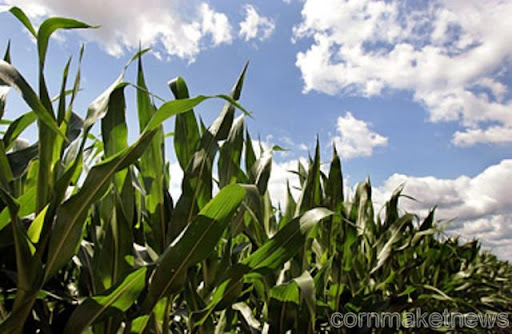Sunday, April 24, 2011
Corn Seen Topping Wheat, Raising Tyson Costs, Helping Syngenta
 Corn may become costlier than wheat for the first time since 1984 as demand for livestock feed and ethanol grows, increasing expenses for Tyson Foods Inc. (TSN) and boosting sales at Syngenta AG. (SYNN)
Corn may become costlier than wheat for the first time since 1984 as demand for livestock feed and ethanol grows, increasing expenses for Tyson Foods Inc. (TSN) and boosting sales at Syngenta AG. (SYNN)
Futures will average a record $8 a bushel in the three months ending Sept. 30, more than the $7.70 a bushel estimated for wheat, said Abah Ofon, an agricultural commodity analyst atStandard Chartered Plc (STAN) in Singapore. Corn will be 11 percent more expensive than wheat in three months, according to Goldman Sachs Group Inc. (GS) Corn in Chicago traded at $7.6125 at 9:02 a.m. in Singapore.
Surging costs of corn, an ingredient in livestock and poultry feed, may spur global food prices to rebound to a record, prompting central banks from Beijing to Brasilia to increaseinterest rates. While the gains may raise feed costs for Tyson, the largest U.S. meat processor, they would benefit Syngenta, the world’s biggest agricultural-chemical maker, as farmers seek to protect their crops from pests and diseases.
“There’s only a limited amount of wheat that you can switch into feed at any given time,” according to Ofon, who correctly predicted in January that wheat would trail corn. That will limit wheat’s capacity to benefit from surging prices of corn, he said. Wheat was 49 percent costlier than corn on average in the past five years, and ended at $8.3475 on April 21.
Wheat will decline to $7.75 a bushel in three months while corn may advance to $8.60 a bushel, Goldman Sachs predicted in a report April 21.
Syngenta, Tyson
Sales by Syngenta expanded 14 percent to $4.02 billion in the first quarter from a year ago as farmers in Europe and the U.S. advanced purchases of chemicals aimed at protecting crops against pests and diseases, John Ramsay, chief financial officer, said in a teleconference on April 15.
“We’re already seeing indications that the crop enhancement market for corn and soybeans in the U.S. will be up strongly this year,” Ramsay said.
Tyson and other meat processors have faced higher feed costs as corn and soybean prices advanced to their highest levels since 2008. Corn and soybean meal represent 42 percent of Tyson’s cost of raising chicken, which made up 34 percent of its sales in 2010, according to the company.
Corn may advance to $8 a bushel, said Luke Mathews, a commodity strategist atCommonwealth Bank of Australia, while Alex Bos, an analyst at Macquarie Group Ltd., said futures may climb as high as $10 a bushel if U.S. farmers plant less than the government estimates.
Corn, Ethanol
Global stockpiles will drop for a third year to 111 million metric tons in 2011-2012, or about 13 percent of consumption, the International Grains Council said on April 20. That would be the smallest ratio of inventory to consumption since 1974, according to U.S. Department of Agriculture data.
While the United Nations Food & Agriculture Organization’s Food Price Index dropped from its record in March, harvests may not increase enough to rebuild global stockpiles to “safe levels” as demand for food, livestock feed and biofuel increase, said Concepcion Calpe, an economist at the FAO, on April 7.
About 7 percent of the U.S. corn crop was planted as of April 17, down from 16 percent a year earlier, according to the USDA. At least a third of the crop should be planted by May 1 or yield potential may be diminished, said Greg Grow, the director of agribusiness for Archer Financial Services Inc. in Chicago.
Expanding Acreage
Acreage in the U.S., the world’s largest grower and exporter, will expand 4.5 percent to 92.178 million acres (37.3 million hectares) this year, the second-largest since 1944, the USDA estimates.
Corn use in ethanol production will jump 35 percent to 5 billion bushels this season from two years ago, the USDA said April 8. A by-product of processing is dried distillers’ grain with solubles, a competitor of feed wheat.
Increasing supplies of so-called DDGS will provide poultry and livestock farmers with a cheaper alternative, discouraging them from switching to wheat, according to Simon Clancy, manager for export brokerage at FCStone Australia Pty.
The last time the most-active corn futures contract in Chicago closed at a premium to wheat was on June 18, 1984, according to data compiled by Bloomberg.

This post was written by: HaMienHoang (admin)
Click on PayPal buttons below to donate money to HaMienHoang:
Follow HaMienHoang on Twitter














0 Responses to “Corn Seen Topping Wheat, Raising Tyson Costs, Helping Syngenta”
Post a Comment